Van Buren Bike Lanes
The City of Little Rock installed bike lanes on Van Buren between Markham and Kavanaugh between Nov. 28th and Nov. 30th 2017 (Figs. 1-4). These bike lanes were installed in the context of a 2017 Street Resurfacing Project.

Figure 1. The start of the bike lanes at the Markham/Fair Park/Van Buren intersection. The corridor starts with sharrows because of the width required for the left turn lane onto Markham; bike lanes start immediately after A Street.
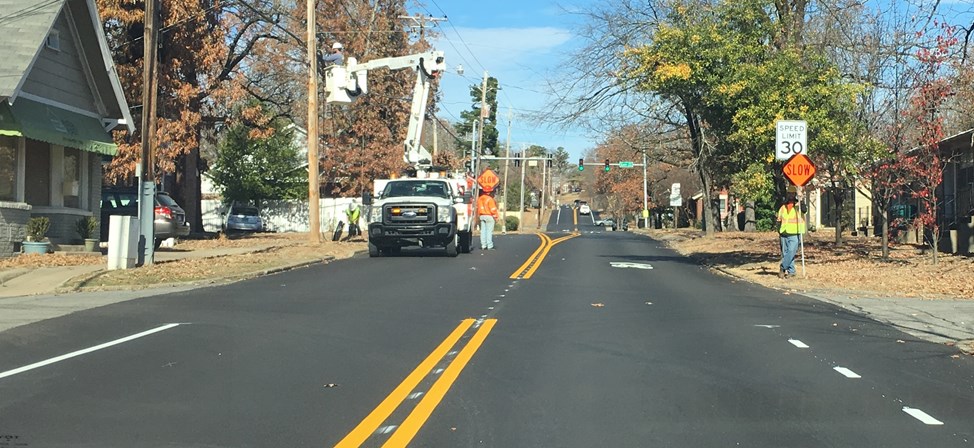
Figure 2. Bike lanes turn into sharrows at C Street to accommodate the left turn lane onto Lee Street.
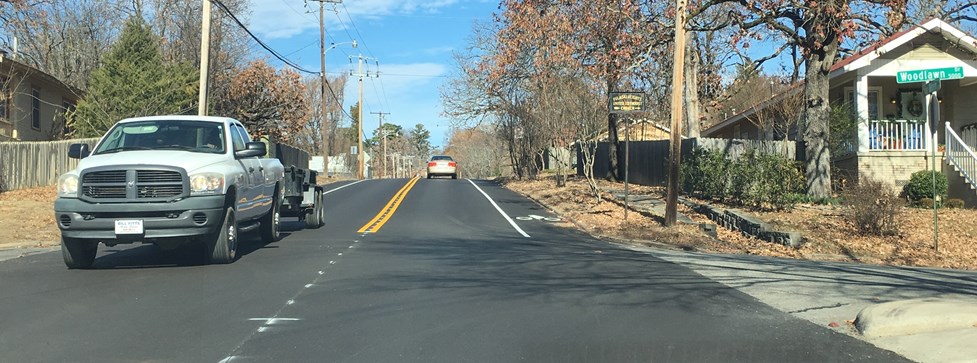
Figure 3. Bike lanes resume immediately after Woodlawn Drive.
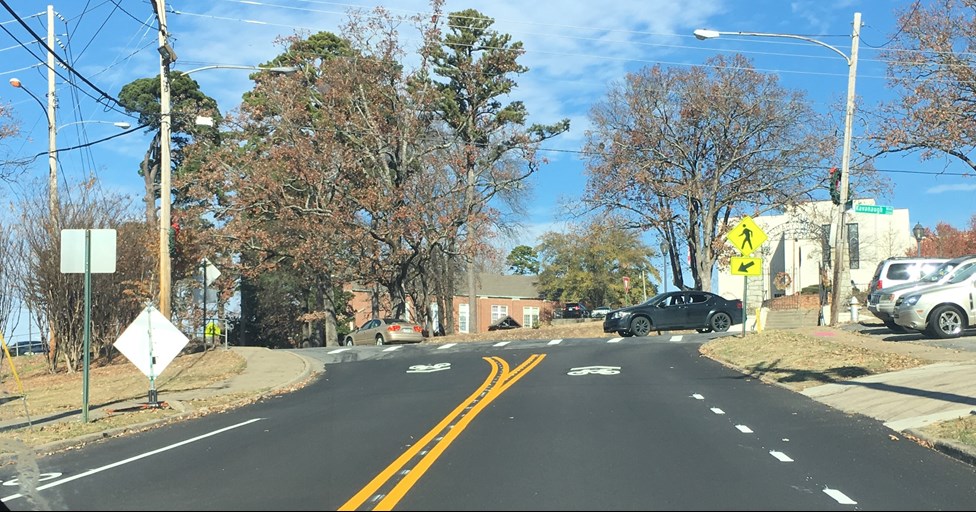
Figure 4. Bike lanes end at the Kavanaugh sharrows.
Why Bike Lanes on Van Buren?
While these bike lanes are not on the Master Bike Plan (Fig. 5), they serve two important connectivity functions.
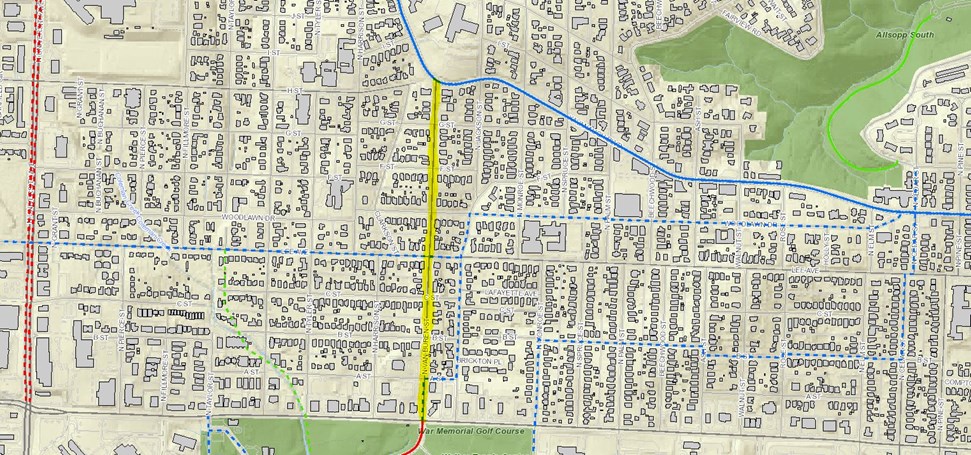
Figure 5. Van Buren (yellow highlight) is not on the Master Bike Plan, but connects the Fair Park bike lanes to the Kavanaugh sharrows.
Safe W. Markham Street Crossing
W. Markham St. is a formidable crossing barrier for people using our street network on bike. It is a four lane, high speed, high traffic count street (21,000 ADT close to the Markham/Van Buren intersection) with rolling hills that obscure motorist sightlines and few traffic lights to slow traffic or facilitate crossing (Fig. 6). W. Markham presents such a challenge for bicycle connectivity that our Master Bike Plan proposes few crossings, and most of the proposed crossings are arguably dangerous (Fig. 7). New bike crossing signs on Markham at the Fair Park/Van Buren intersection increase the safety of this crossing (Fig. 8). The installation of bike lanes on Van Buren creates only the second bike corridor to cross Markham/3rd in all of Little Rock (State St. has sharrows that cross 3rd St.).

Figure 6. Markham is a dangerous street to cross on bike or on foot without a traffic light (Google streetview close to the intersection of Van Buren and Markham).

Figure 7. Our Master Bike Plan proposes few options to cross Markham. A) The Rodney Parham/Markham intersection is very busy, but if quality bike facilities can be constructed on both sides, it will represent an important, rare north-south crossing of Markham. B) only the most hardened bicyclist (Latent Demand Figs. 4 & 5) would ride without separated facilities on Markham between Hughes and McKinnley. This route may require reexamination, C) This is the Fair Park/Markham/Van Buren intersection. It has a traffic light to facilitate crossing and now has bike lanes on both sides of Markham, D) the proposed Monroe St. crossing has no traffic light to stop W. Markham St. traffic. This crossing may require reexamination, E) The Barton/W. Markham crossing has no traffic light to stop W. Markham St. traffic and sightlines are obscured by a bend in the road. This crossing may require reexamination. The new Master Complete Streets Plan must consider better, more frequent W. Markham St. crossings.

Figure 8. Bike crossing signs on Markham alert drivers to this new bicycle corridor.
Connects Hillcrest and the Heights to the Midline
The proposed Midline is an ambitious set of projects to create an east west bicycle corridor actively sought since 2006. Once created, the utility of the Midline will be amplified as quality connections are created to it. The Van Buren bike lanes, in combination with the already installed Fair Park bike lanes and Kavanaugh sharrows, connect the Heights and Hillcrest to the Midline (Fig. 9).
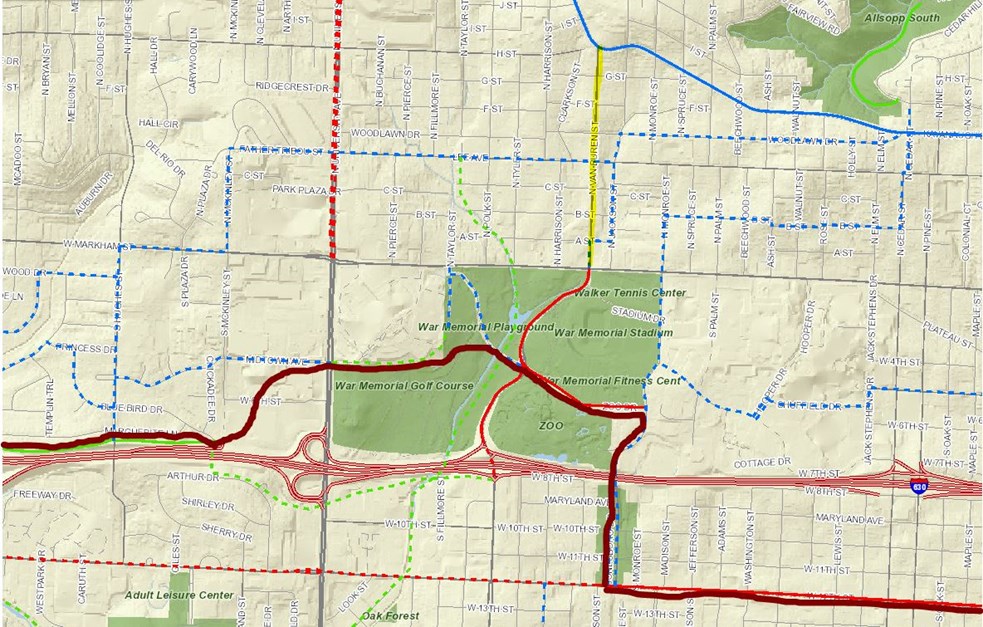
Figure 9. Van Buren bike lanes in the context of the Midline. Van Buren bike lanes are yellow highlight and the approximate route of the Midline is the hand-drawn maroon line.
History
Like the Main Street and 12th Street projects, understanding how this facility was accomplished may inform future efforts to create bicycle facilities. While the Main St. project was largely business district-driven, and the 12th St. project was largely BFCC-driven, the Van Buren project was largely City staff-driven. Little Rock's Bicycle and Pedestrian Coordinator has the opportunity to review resurfacing projects and consider how those streets might contribute to our bicycle network. Van Buren was on the list of 2017 Resurfacing Projects. Reviewing Van Buren St., I saw a clear need for bike lanes for the reasons discussed above. Public Works and Traffic Engineering City staff discussed the project and saw little controversy, cost, or conflicting needs. The number of vehicular lanes weren't decreasing, vehicular lanes were just getting narrowed to a 10 ft. width more appropriate for the street type. Street parking wasn't being taken away; no parking was allowed on the street prior to the bike lane installation. City staff made the call and installed the lanes.
Lessons
So what can we learn from this process? This is my takeaway. City staff may be able to install bicycle facilities without outside influences under a certain set of conditions:
- No loss of vehicular lanes. When vehicular lanes are removed (e.g. a road diet), even when warranted, the operation of the street changes. When reducing the number of vehicular lanes to install bike lanes is necessary, staff will likely either take the project to public meetings or refrain from doing the project if there is no advocacy from outside the City.
- No loss of street parking. Removal of street parking can have negative repercussions. Are there other places to park nearby? Is it a residential street on which some residences do not have driveways or other parking opportunities? When street parking must be removed to install bike lanes, staff will likely either take the project to public meetings or refrain from doing the project if there is no advocacy from outside the City.
- There is little/no monetary cost. Resurfacing projects offer an important opportunity to make a street more Complete because all of the street's striping is removed during the process. Installing striping that better includes bicycle and pedestrian traffic modes has little to no additional cost (and can save money).




 Trash & Recycling
Trash & Recycling
 Online Payments
Online Payments
 City Documents
City Documents
 Parks
Parks
 Traffic Court
Traffic Court
 E-NEWS
E-NEWS
 EXPLORE
EXPLORE
 NEWS
NEWS
 TRANSLATE
TRANSLATE
